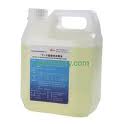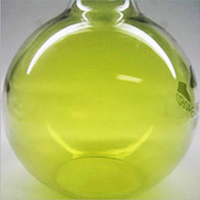 |
||||||

|
||||||
|
|
|
|||||
|
Specification For Sodium Hypochlorite Solution Sodium Hypochlorite (NaOCl), also known
as "hypo" or "bleach", is a worldwide
used and trusted water disinfectant. It is recognised
as having an unsurpassed disinfection spectrum and to
be the most effective broad range disinfectant against
all known pathogenic (disease-producing) bacteria, viruses,
fungi, and protozoa. Daily, millions of people around
the world depend on properly chlorinated water for drinking
and other purposes. There is no better, cost-effective
and versatile "residual" disinfectant. COMMERCIAL HYPO (10% to 14%) Sodium Hypochlorite (NaOCl), typically supplied
as a pale greenish liquid, is also known as soda bleach
or liquid bleach. It is prepared by reacting dilute caustic
soda solution with liquid or gaseous chlorine, accompanied
by cooling. Sodium Hypochlorite, or bleach, is the main
ingredient in laundry bleach and it is used extensively
as a bleaching agent in the textile, detergents, and paper
and pulp industries. . |
|
| Furthermore, chlorine
is the disinfectant of choice for drinking water for a number
of reasons. Its wide range of benefits can not be provided
by any other single disinfectant. Chlorine-based disinfectants are the only disinfectants that provide a residual in the distribution system. This residual is an important part of the multi-barrier approach to preventing waterborne disease. The increasing need for groundwater systems to disinfect may actually increase the use of chlorine for drinking water disinfection. According to the World Health Organization, disinfection by chlorine is still the best guarantee of microbiologically safe water (WHO Regional Office for Europe, Drinking Water Disinfection). This is unlikely to change in the near future. Life itself depends on chlorine and its extraordinary ability to react with other elements. Chlorinated compounds occur naturally in humans and are found in blood, skin and teeth. Even white blood cells need chlorine to enable them to fight off infections. In nature, chlorine is even more plentiful than carbon. It occurs in both plants and animals and makes up 2.9% of the world's oceans and 0.045% of the earth's crust. When added to water in minute quantities, it quickly kills bacteria and other microbes. It has the major advantage of ensuring clean water right up to the tap, whereas the action of other disinfectants such as ozone, ultraviolet light and ultrafiltration - is only temporary.
|
| RECOMMENDED
PRACTICES FOR ENVIRONMENTAL CLEANING IN THE SURGICAL PRACTICE SETTING An operational protocol must be
in place in your SOP and include ‘how to use’
instructions for an appropriate disinfectant. Inactivation of HIV & Hepatitis B Routine wipe down of surfaces: Household bleaches contain sodium hypochlorite; the free chlorine concentration is 5.25%. This is equivalent to 52,000 ppm. Dilutions of 1 to 10 are frequently used in laboratories. This provides 5,200 ppm of available chlorine. A 1 to 20 dilution (2500 ppm) may be used for routine disinfection when negligible amounts of organic material are present (such as disinfecting benchtops). Concentrations up to 10,000 ppm (1 to 5 dilution) may be used for heavy organic contamination. Hypochlorites are effective against a wide range of bacteria and viruses and are most commonly used for instrument soaks, spill response, work surfaces, and liquids to be discarded. |


